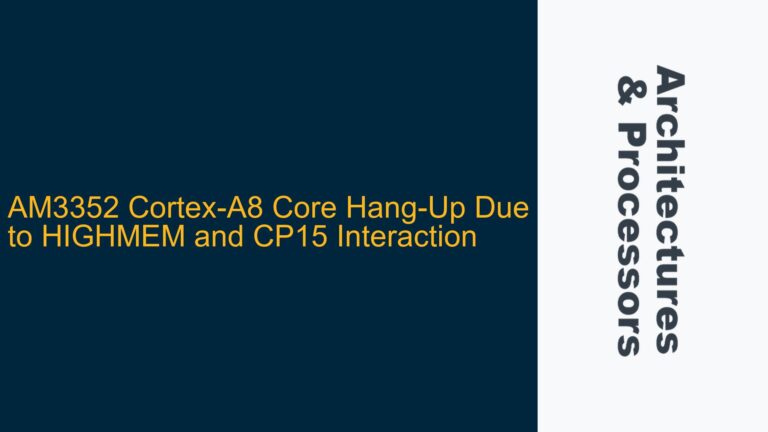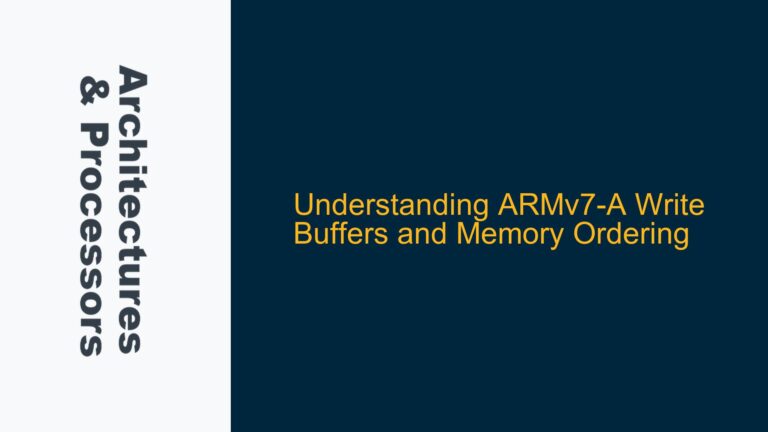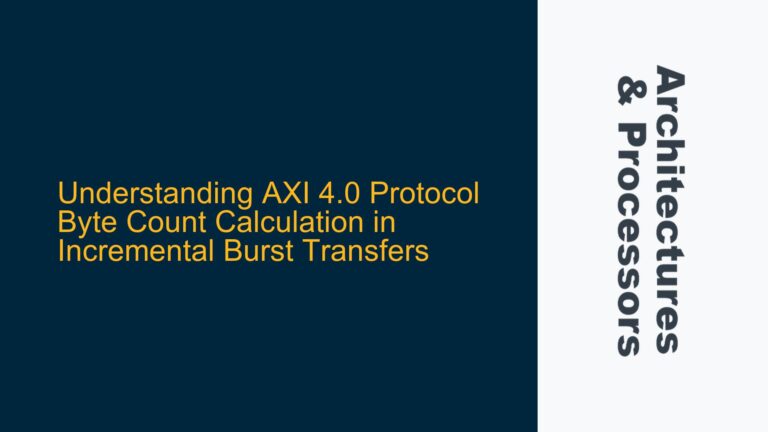Floating-Point Exception Handling and FMADD Performance Anomaly
The core issue revolves around the observed performance difference in the FMADD (Fused Multiply-Add) instruction on ARM processors when the FPSCR.IXC (Inexact Cumulative Exception) flag is set versus when it is not set. Specifically, the FMADD instruction executes faster when FPSCR.IXC is set to 1, compared to when FPSCR.IXC is 0. This behavior is counterintuitive, as one would expect additional checks or exception handling to slow down execution rather than speed it up. The FPSCR.IXC flag is part of the Floating-Point Status and Control Register (FPSCR), which governs the behavior of floating-point operations, including exception handling and rounding modes.
The FPSCR.IXC flag is set when a floating-point operation produces a result that is inexact, meaning the result cannot be represented exactly within the precision of the floating-point format. When FPSCR.IXC is set, it indicates that at least one inexact exception has occurred since the flag was last cleared. The FPSCR.IXE (Inexact Exception Enable) bit controls whether an exception is raised when an inexact result occurs. In this case, FPSCR.IXE is not explicitly disabled, meaning the hardware is configured to handle inexact exceptions.
The FMADD instruction is a critical floating-point operation that performs a fused multiply-add operation, which is commonly used in high-performance computing, signal processing, and machine learning workloads. The performance of FMADD is highly sensitive to the state of the FPSCR register, particularly the exception flags and enable bits. The observed performance anomaly suggests that the internal microarchitectural behavior of the FMADD instruction changes depending on the state of FPSCR.IXC.
FPSCR.IXC State and Microarchitectural Optimization Pathways
The performance difference between FMADD execution with FPSCR.IXC set to 1 versus 0 can be attributed to the microarchitectural optimizations and exception handling pathways within the ARM processor. When FPSCR.IXC is 0, the processor must perform additional checks to determine whether an inexact exception should be raised. These checks involve comparing the result of the floating-point operation against the theoretical unbounded precision result, which is computationally expensive. This additional overhead slows down the execution of the FMADD instruction.
When FPSCR.IXC is 1, the processor can bypass some of these checks because the flag already indicates that an inexact result has occurred. This allows the processor to take a more optimized execution pathway, reducing the overhead associated with exception handling. The exact details of this optimization depend on the specific ARM core implementation, but it generally involves skipping certain stages of the floating-point pipeline or reusing previously computed results.
Another factor contributing to the performance difference is the interaction between the FPSCR.IXC flag and the processor’s speculative execution mechanisms. Modern ARM cores often employ speculative execution to improve performance by predicting the outcomes of branches and other control flow instructions. When FPSCR.IXC is 0, the processor may speculatively execute additional instructions to handle potential inexact exceptions, which can increase the instruction pipeline’s latency. When FPSCR.IXC is 1, the processor can avoid speculative execution of these additional instructions, leading to faster overall execution.
Additionally, the state of FPSCR.IXC can influence the processor’s power management and clock gating strategies. When FPSCR.IXC is 0, the processor may allocate more resources to handle potential exceptions, which can increase power consumption and reduce performance. When FPSCR.IXC is 1, the processor can optimize resource allocation, leading to better performance and lower power consumption.
Mitigating FPSCR.IXC-Related Performance Variability in FMADD
To address the performance variability caused by the FPSCR.IXC flag, developers can take several steps to optimize their code and ensure consistent performance. The first step is to understand the specific behavior of the ARM core being used, as different cores may implement FPSCR.IXC-related optimizations differently. Consulting the processor’s technical reference manual and performance optimization guides can provide valuable insights into the core’s floating-point pipeline and exception handling mechanisms.
One effective strategy is to explicitly manage the state of the FPSCR register, including the FPSCR.IXC flag, to ensure that the processor takes the most optimized execution pathway. This can be done by clearing the FPSCR.IXC flag at the start of critical code sections and setting it only when necessary. For example, developers can use the VMSR and VMRS instructions to read and write the FPSCR register, allowing fine-grained control over its state.
Another approach is to minimize the occurrence of inexact results in floating-point calculations. This can be achieved by using higher-precision floating-point formats, such as double-precision (64-bit) instead of single-precision (32-bit), or by carefully designing algorithms to reduce numerical errors. Reducing the frequency of inexact results can help keep the FPSCR.IXC flag clear, allowing the processor to take the optimized execution pathway more consistently.
Developers can also use compiler optimizations to improve floating-point performance. Many modern compilers, such as GCC and Clang, offer flags and options to optimize floating-point code, including options to control exception handling and rounding modes. For example, the -ffast-math flag in GCC enables aggressive floating-point optimizations, including the assumption that no exceptions will occur. While this flag can significantly improve performance, it should be used with caution, as it can lead to non-standard behavior and numerical inaccuracies.
In some cases, it may be necessary to profile and analyze the performance of floating-point code to identify bottlenecks and optimize critical sections. Tools such as ARM’s DS-5 Development Studio and Performance Analysis tools can help developers identify performance hotspots and understand the impact of FPSCR.IXC on their code. By combining these tools with careful code optimization, developers can achieve consistent and high-performance floating-point execution on ARM processors.
Finally, developers should stay informed about updates and errata related to their specific ARM core, as microarchitectural changes and bug fixes can impact floating-point performance. ARM regularly releases technical updates and documentation that provide detailed information on performance optimizations and known issues. By keeping up-to-date with these resources, developers can ensure that their code is optimized for the latest hardware and software advancements.
In conclusion, the performance difference in the FMADD instruction caused by the FPSCR.IXC flag is a result of microarchitectural optimizations and exception handling pathways within ARM processors. By understanding and managing the state of the FPSCR register, minimizing inexact results, using compiler optimizations, and profiling code, developers can mitigate this performance variability and achieve consistent and high-performance floating-point execution.






